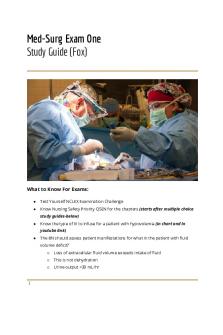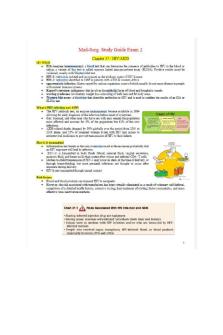Med Surg 2 Final Study Guide PDF

| Title | Med Surg 2 Final Study Guide |
|---|---|
| Course | Primary Concepts Of Adult Nursing II |
| Institution | Nova Southeastern University |
| Pages | 25 |
| File Size | 393.9 KB |
| File Type | |
| Total Downloads | 58 |
| Total Views | 157 |
Summary
Med Surg 2 Final Study Guide for Professor Martinez ...
Description
*What’s in bold she verbally mentioned* 20-Respiratory Asthma (3 questions) *Bronchodilator teaching- appropriate time?
Can used prophylactic before activity such as walking and eating Prescribed for PRN or for regular basis Proper usage: exhale first, seal lips around pump, press down and inhale and hold for 10 seconds, repeat puffs as directed but allow 15-30 in between.
Asthma patho
Chronic inflammatory disease, reversible condition, causes airway hyper responsiveness, mucosal edema and mucous production. Inflammatory response occurs= mast cells, macrophages, t lymphocytes, neutrophils, eosinophils, IgE(causes direct bronchoconstriction)
S/S
Cough, chest tightness, wheezing (on expiration), dyspnea
*Monitor airway patency due to mucous from the inflammatory process. Status Asthmaticus- is when an asthma attack doesn’t respond to therapy. Rapid onset severe and persistent.
Atelectasis *prevention (post op)
Atelectasis can arise from abdominal/thoracic surgery o Teach pt. cough deep breathing (splint pillow on incision) o Incentive spirometer o Frequent turning o Ambulating o PEEP for pt. that cannot perform the basic measures (listed above)- positive end expiratory pressure.
Pneumonia *Nursing Interventions
Remove secretions (if pt. cant cough, possible suctioning) Encourage hydration/humidifier-lossens secretions High humidity face mask Encourage coughing Lung expansion maneuvers- IS, deep breathing and coughing 1
Chest physiotherapy Oxygen therapy- for better oxygenation Semi fowlers and change position frequently to assist in moving secretions Moderate activity during initial treatment b/c this will increase oxygen demands Monitor fevers r/t pneumonia- this increases workload which dehydrates the pt. this is why you their increase fluids (2L/day) Maintain nutrition- Gatorade or ensure, small frequent meals Educate pt. Complications- possible intubation, if pleural effusion is present = thoracentesis
Chronic Bronchitis (COPD)
Diseased airway, defined by cough and sputum production for at least 3 months in a matter of 2 years. Irritants causes mucous production, which then impedes airflow, mucous plug decreases cilliary function. Alveolar near bronchioles become damaged, fibroses, which alter the alveolar macrophage functions, their functions, is to destroy foreign particles and bacteria. This can lead to respiratory infection
Nursing management for COPD
Achieve airway clearance o Adm bronchodilators or corticosteroids o Eliminate pulmonary irritants like smoking (reduces ciliary function) can lead to pneumonia o Encourage coughing o Chest physiotherapy with postural drainage o Increase fluid intake, humidifier o Diaphragmatic/purse lip breathing exercises o Administer antibiotics to treat respiratory tract infections o Administer oxygen o Check ABG levels o Provide small frequent meals o Listen to breath sounds o Teach client about breathing exercises
PPD – time frame – (48-72hrs) = if patient comes in after 48hrs and the reading is too big have them come back when the 72hrs are met it may be too soon Geriatric population present with different s/s and a negative skin test but this does not rule out the disease therefore, a repeated skin test has to be done 1-2 weeks after the first one. Sputum culture is the confirmation diagnosis
TB
Nursing management
2
Airway clearance by adequate hydration, and proper posture Medication adherence Promoting activity adequate nutrition- bc of coughing pts may feel fatigue, small frequent meal and liquid supplements aid in caloric requirements Preventing transmission-monitor for fever, signs of worsening or spread of disease Place Pt. in a negative air pressure room
*INH
Can be used prophylactically for people at risk for TB 6-12 month’s daily dose Monitor liver enzymes, BUN, & creatinine monthly Sputum cultures monitored for AFB (acid fast bacilli) Monitor for fevers b/c this will determine if there is resistance to abx TX Take on empty stomach b/c food interacts with absorption Avoid tyramine and histamine for ex. Tuna, aged cheese, red wine, soy sauce, and yeast extracts.
Respiratory distress symptoms
Hypoxia due to due poor gas exchange (oxygen starved), confusion is a result.
Bronchoscopy
Before the procedure, informed consent is obtained. NPO 4-8 hours before the test. Explain procedure, Administer preoperative med, Pt. must remove dentures. After the procedure pt. is still NPO until cough reflex returns. Check LOC, respiratory status, signs of hypotension, tachycardia. A small amount of blood-tinged sputum and fever is expected within the first 24 hours. Instruct pt. to report SOB or bleeding.
ABG’s *Chronic vs. acute patient (compensation) - Chronic patients will have a compensatory response and learn to adapt with this • • • •
Bicab: 22-26 pH: 7.35 - 7.45 PaO2: 80-100 PaCO2: 35-45
• ABG levels are obtained through an arterial puncture at the radial, brachial, or femoral artery or through an indwelling catheter 35- Cardiovascular
3
Dysrhythmias
Disorders of the formation or the conduction or both of the electrical impulses of the heart
Normal Sinus rhythm
HR 60-100
Sinus bradycardia
HR less than 60 If symptomatic treat with atropine (0.5mg every 3-5 min , max total dosage 3mg, IV bolous) o S/S of brady shakiness hypotension and syncope Not symptomatic=no tx Try to resolve underlining cause
Sinus tachycardia
HR 100-120 Identify the cause to reduce the symptoms If hemodymically unstable- synchronized cardio version needs to be done Vagal maneuver or adenosine (stops the heart momentarily, and resets it)
Sinus arrhythmia
HR 60-100 (increases during inspiration and decreases with expirations) Rhythm: irregular Not treated b/c it does not cause any hemodynamic effects
PAC (premature atrial contraction)
“heart feels like it skipped a beat” Can be caused by caffeine or alcohol or nicotine No tx if its infrequent If persistent more than 6 per min can cause more serious dysrhythmias such as afib Treat underline cause
A flutter
Saw tooth like (p wave) Atrial rate 250-400 Ventricular rate 75-150 Atrial rate is fast and av node cant keep up TX- vagal maneuveur or adenosine (adm w/arm up and 20ml flush, bc it has a very short half life), Cardiovert to sinus rhythm
HR 300-600 (atrial rate) 120-200 (ventricular) Rhythm is highly irregular No P wave
A Fib
4
TX- Coumadin before cardiovert and for at least 4 weeks after, cardiovert, amiodorone (before cardiovert- to enhance the success of cardioversion and prevent relapse of afib) analgesics (before cardioversion)
HR 100-200 (ventricular rate) 3 or more PVC in a row QRS shape is abnormal, very difficult to detect the p wave Vtach leads to Vfib if untreated TX is CPR then epi, then cardioversion with pulse, if pt. has no pulse defib needs to be done EF less then 35% considered for ICD, if greater than 35% they are given amiodarone
HR greater then 300 (ventricular rate) Rhythm is extremely irregular Most common dysrhythmia is cardiac arrest “Defib the Vfib” these pt. have no pulse, no audible hear beat, and respiratory issues. Death is imminent CPR should be done as the nurse gets the defibrillator Epi is given after 1st unsuccessful defib and every 3-5 min After 3rd unsuccessful defib adm amiodarone, lidocaine, magnesium
Vtach
Vfib
Normal EKG’s (for example PR 2.0 is not normal) P-R interval
0.12-0.20
QRS complex
usually less than 0.12
CHF *Interventions (understanding what happens- SOB difficulty walking) *Teaching for CHF patients (when should they see the HCP?- weight gain)
Report to HCP o If they have gained 2-3 lbs. in a day / 5 lbs. in one week. o Unusual SOB with activity or at rest o Increased edema in ankles, feet and abdomen o Persistent cough o Loss of appetite o Restless sleep, increased # of pillows to sleep 5
Intervention o Daily weight- same clothes same time every day o Conserve energy by balancing activities with rest periods o Restrict Na, fluid restriction o Monitor for skin breakdown due to edema (it causes decrease circulation) o Auscultate lungs for fluid overload and heart sounds o Monitor electrolytes due to diuretics (make sure they have proper kidney function) o You cant fix HF we only treat the symptoms
*Lasix and CHF
Monitor electrolytes (k+) Monitor for kidney function Daily weight to see if meds are effective (check I/O’s) Give in the morning to avoid going to the bathroom all night
*CAD is atherosclerosis and that causes angina (stable and unstable) which then can lead to ACS/ MI ACS
Emergency situation that is an acute onset of myocardial ischemia = myocardial death (MI) if interventions do not occur ASAP
MI Interventions (select all that apply) What should the nurse do first? Have the patient sit down
MONA
1st- 12 lead EKG within 10 minutes upon arrival Obtain labs (cardiac enzymes) Troponin Oxygen nitro, morphine, aspirin, beta blocker, ACE inhibitor within 24 hrs, bed rest for minimum 1224 hours
Is given for angina and prophylactically Sublingual (3 dose max, Q5 min) Potent vasodilator Stored in dark bottle (shelf life is 6 months never been opened, or 3 month if opened), metal cap, no cotton filter Call 911 after and wait for ambulance
Nitro
Different types of angina (ischemia)
Stable o Predictable and consistent pain occurs on exertion, relieved by rest or nitro 6
Unstable o AKA: Pre-infarction angina-symptoms increase in frequency and severity and not relieved with rest or nitro
Risk for cardiovascular disease (select all that apply)
Modifiable: Cholesterol abnormalities, tobacco use, HTN, DM, metabolic syndrome, obesity and sedentary lifestyle Non modifiable: family hx, increased age (more than 45 males, more than 55 for women) gender, race (mainly African Americans)
Normal Goal = 100 o Thiazide diuretic in combination with an ACE or ARB, BB, or, CCB as treatment
Simvastatin
Lowers high cholesterol and triglyceride levels. May reduce the risk for MI, stroke, and coronary heart disease Normal cholesterol level: below 200 mg/dl Patient teaching: o Instruct patient to take medication as directed, not to skip doses or double up on missed doses. Advise patient to avoid drinking more than 1 qt of grapefruit juice/day during therapy. Medication helps control but does not cure elevated serum cholesterol levels. o Advise patient that this medication should be used in conjunction with diet restrictions (fat, cholesterol, carbohydrates, alcohol), exercise, and cessation of smoking. o Instruct patient to notify health care professional if unexplained muscle pain, tenderness, or weakness occurs, especially if accompanied by fever or malaise. o Advise patient to wear sunscreen and protective clothing to prevent photosensitivity reactions (rare). o Instruct patient to notify health care professional of all Rx or OTC medications, vitamins, or herbal products being taken and consult health care professional before taking any new medications. o Advise patient to notify health care professional of medication regimen before treatment or surgery. o Instruct female patients to notify health care professional promptly if pregnancy is planned or suspected, or if breastfeeding. o Emphasize the importance of follow-up exams to determine effectiveness and to monitor for side effects.
PCI
7
Percutaneous coronary intervention is performed to open blocked coronary arteries caused by coronary artery disease and to restore arterial blood flow to the heart tissue without open-heart surgery.
PTCA- what is the purpose?
A balloon tipped catheter is used to open blocker coronary vessels and resolve ischemia. Its used to improve blood flow to the heart
Cardiac cath teaching - Nursing Management: BEFORE Cardiac Cath:
Instruct PT to fast usually for 8 to 12 hours before the procedure.
Inform PT, that a family, friend or person responsible must transport them home if it is an outpatient procedure.
Inform pt. about the duration of the test and it will involve lying on a hard table for less than 2 hours
IV medications are give to maintain comfort
Inform pt. about sensations experienced during cauterization (pounding, palpitations)
ASSES for ALLERGIES (Iodine) the injection of a contrast agent will be used
Encourage pt. to express fears and anxieties
AFTER Cardiac Cath.:
Observe the catheter access site for bleeding or hematoma formation
Assess peripheral pulses in the affected extremity (dorsalis pedis and posterior tibial pulses in the lower extremity, radial pulse in the upper extremity) every 15 minutes for 1 hour, every 30 min for 1 hour and hourly for 4 hours or until discharge.
EDUCATE/TEACH PT AND FAMILY MEMBERS HOW TO CHECK PULSES!
Check VS, skin, temp, cap. Refill, and for complications of bleeding
Observe cardiac monitor for dysrhythmias
Maintain bed rest for 2 to 6 hours after the procedure. If manual pressure or a mechanical device was used during femoral artery approach the pt. remains on bed rest for up to 6 hours and the affected leg straight and HOB elevated no greater than 30 degrees.
8
Instruct pt. to report chest pain and bleeding or sudden discomfort from the catheter insertion site. “Leg is falling asleep” requires immediate intervention
Monitor pt. for contrast agent-induced nephropathy by observing elevations in the serum creatinine levels. CHECK BUN AND CREAT. (Because of contrast, you want to make sure the kidneys are filtering the contrast effectively.)
Oral and IV hydration used to flush contrast agent from urinary tract. Record I & O
Ensure pt. safety by instructing pt. to ask for help when getting out of bed the first time after procedure, monitor for orthostatic hypotension, dizziness, and light headedness.
**Check coag tests (PT/PTT) because it is an invasive procedure, you want to make sure they are clotting right
** If allergic to Iodine the study will still be done, Benadryl and Solu-cortef will be given before.
** If Pt. has renal problems, fluids will be give to flush out contrast
**Cardiac Cath. Pt. will be your PRIORITY…unless you have a cardiac arrest.
HTN *Essential and secondary
Essential HTN- High Bp from an unidentified cause (majority of people) o Risk factors: diet, exercise, smoking stress, alcohol, age, genetics, hyperlipidemia, DM, kidney disease Secondary HTN- the cause of high Bp can be identified o For example: renal disease, hyperaldosteronism, pheochromocytoma, medications)
Endocarditis *Treatment and prophylactic teaching for discharge
Infection in the endocardium (inner most) By treating streptococcal pharyngitis you can prevent rheumatic fever, which can lead to rheumatic heart disease. Infective endocarditis occurs with prosthetic heart valves, pacemakers, or valve disorders.
Treatment/teaching
Good oral hygiene Hand hygiene when dealing with long term iv lines (pic lines) Monitor IV sites for redness tenderness warmth swelling drainage. Abx adherence Abx therapy adm 2-6 weeks Q4hrs or continuously with IV or 1 daily IM injection. Monitor blood work for therapeutic effects of Abx, and blood cultures Tx of choice usually penicillin
9
Sx interventions – valve debridement or replacement (pt. who have prosthetic valve endocarditis require valve replacement)
Valve Disorders
Regurgitation- when valves do not close completely, blood flows backwards through the valve Stenosis- when valves do not open completely, and blood flow is reduced Mitral Valve Prolapse-a portion of one or both mitral valve leaflet balloons back into the atrium during systole. Most people never have symptoms. Some have fatigue, sob, lightheadedness, dizziness, syncope, palpitations, chest pain, and anxiety. The first and only sign is an extra heart sound. Patient is advised to eliminate caffeine and alcohol and stop using tobacco. Mitral regurgitation-blood flowing back from the left ventricle into the left atrium during systole. Dyspnea, fatigue, weakness are the most common symptoms. Treatment-ACE inhibitors & ARBS Mitral stenosis-an obstruction of blood flow from the left atrium into the left ventricle often caused by rheumatic endocarditis. Poor left ventricular filling can cause decreased cardiac output. Symptoms: dyspnea on exertion, pulse is weak, and irregular due to a-fib. Tx: anticoagulants. Patients are advised to avoid strenuous activity, competitive sports, and pregnancy, all of which increase the HR. Aortic Regurgitation- flow of blood back into the left ventricle from the aorta during diastole. Arterial pulsations are visible, and dyspnea. Pt. is advised to avoid physical exertion, competitive sports, and isometric exercise. Aortic stenosis- progressive narrowing of the orificle between the left ventricle and aorta usually over several decades. Symptoms include dyspnea, orthopnea, pulmonary edema, dizziness, syncope, and angina. Med management is surgical replacement of the aortic valve
Mitral Stenosis-anticoagulation therapy, common dysrhythmias
Patho: Obstruction of blood flowing from the left atrium into the left ventricle
Most often caused by rheumatic endocarditis, which progressively thickens the mitral valve
Clinical Manifestations: First s/s of Mitral stenosis is dyspnea on exertion. Symptoms don't start to occur until the valve opening has been reduced to one half its usual size. An enlarged left ventricle can cause pressure on the bronchial tree causing the patient to experience coughing and wheezing. Patient may have hemoptysis, Paroxysmal nocturnal dyspnea, orthopnea, palpitations, and may have recurrent respiratory infections. As a result of increased volume and pressure in the atrium, the atrium dilates and hypertrophies becoming electrically unstable in which the patient may experience atrial dysrhythmias
Assessment: The pulse is weak and irregular because of a-fib caused by strain on the atrium. Low pitched diastolic murmur is heard in the apex of the heart
Diagnosis: Echocardiography/EKG/cardiac cath/exercise testing are used to diagnose mitral stenosis and determine the severity 10
Prevention: Minimize the risk of and treatment for bacterial infections, and preventing rheumatic fever by antibioti...
Similar Free PDFs

Med Surg 2 Final Study Guide
- 25 Pages
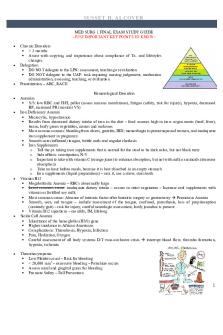
MED SURG 1 Final EXAM Study Guide
- 10 Pages

Med Surg Study guide Notes
- 66 Pages
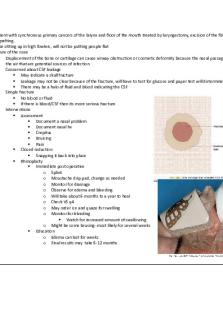
Med Surg II - Exam 2 Study Guide
- 57 Pages

Med Surg 2 Exam 3 Study Guide
- 22 Pages

Med-Surg Test #2 Study Guide
- 10 Pages

Med Surg 2 Study Guide Answer Key
- 145 Pages
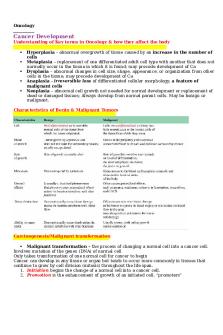
MED SURG 2 first study guide
- 20 Pages
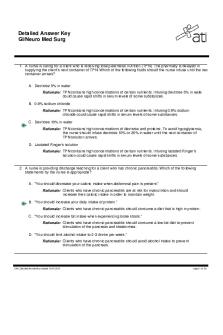
Ati gi med surg - Gi study guide
- 53 Pages

Med surg exam 1 study guide
- 25 Pages

Med surg exam 3 study guide
- 68 Pages
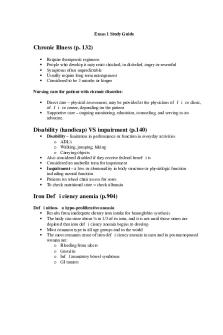
Exam 1 Study Guide - Med-Surg
- 26 Pages
Popular Institutions
- Tinajero National High School - Annex
- Politeknik Caltex Riau
- Yokohama City University
- SGT University
- University of Al-Qadisiyah
- Divine Word College of Vigan
- Techniek College Rotterdam
- Universidade de Santiago
- Universiti Teknologi MARA Cawangan Johor Kampus Pasir Gudang
- Poltekkes Kemenkes Yogyakarta
- Baguio City National High School
- Colegio san marcos
- preparatoria uno
- Centro de Bachillerato Tecnológico Industrial y de Servicios No. 107
- Dalian Maritime University
- Quang Trung Secondary School
- Colegio Tecnológico en Informática
- Corporación Regional de Educación Superior
- Grupo CEDVA
- Dar Al Uloom University
- Centro de Estudios Preuniversitarios de la Universidad Nacional de Ingeniería
- 上智大学
- Aakash International School, Nuna Majara
- San Felipe Neri Catholic School
- Kang Chiao International School - New Taipei City
- Misamis Occidental National High School
- Institución Educativa Escuela Normal Juan Ladrilleros
- Kolehiyo ng Pantukan
- Batanes State College
- Instituto Continental
- Sekolah Menengah Kejuruan Kesehatan Kaltara (Tarakan)
- Colegio de La Inmaculada Concepcion - Cebu
